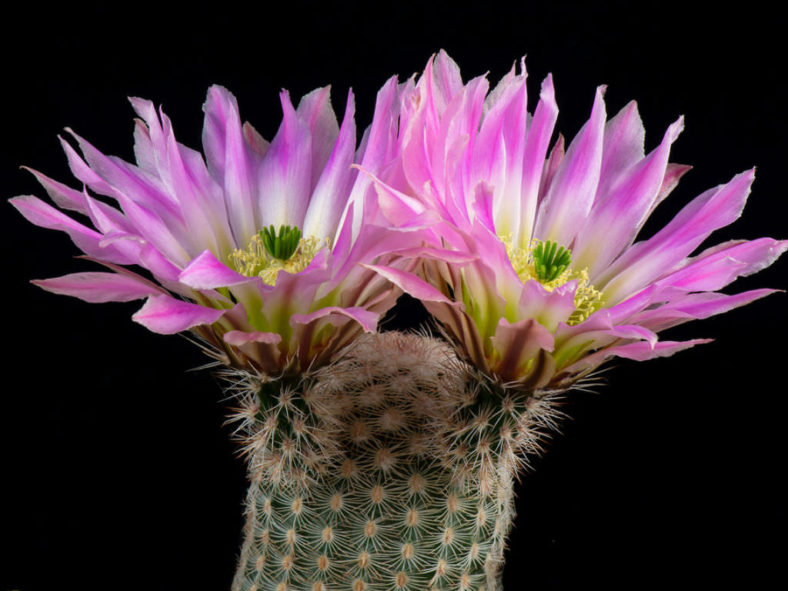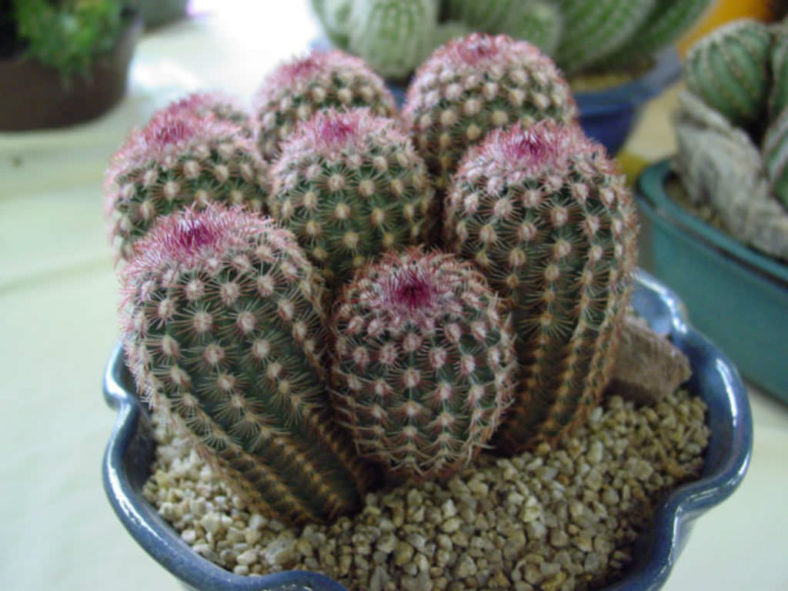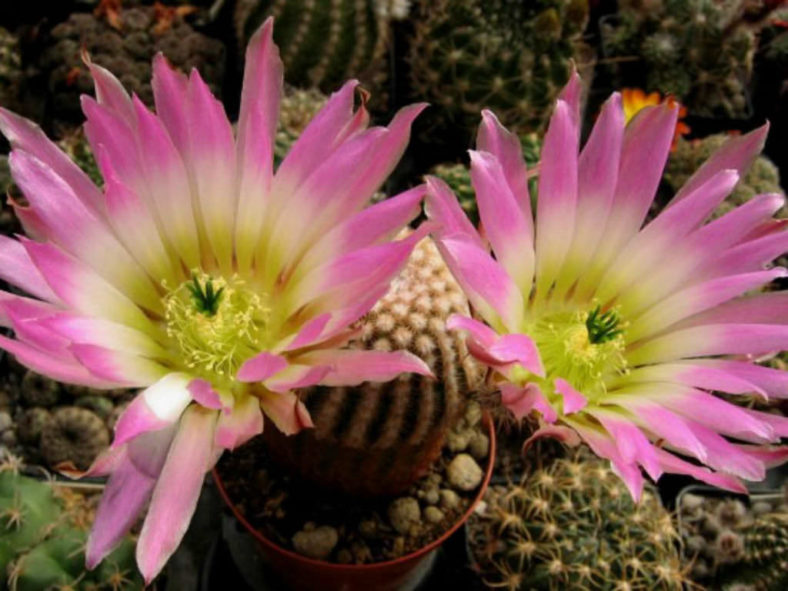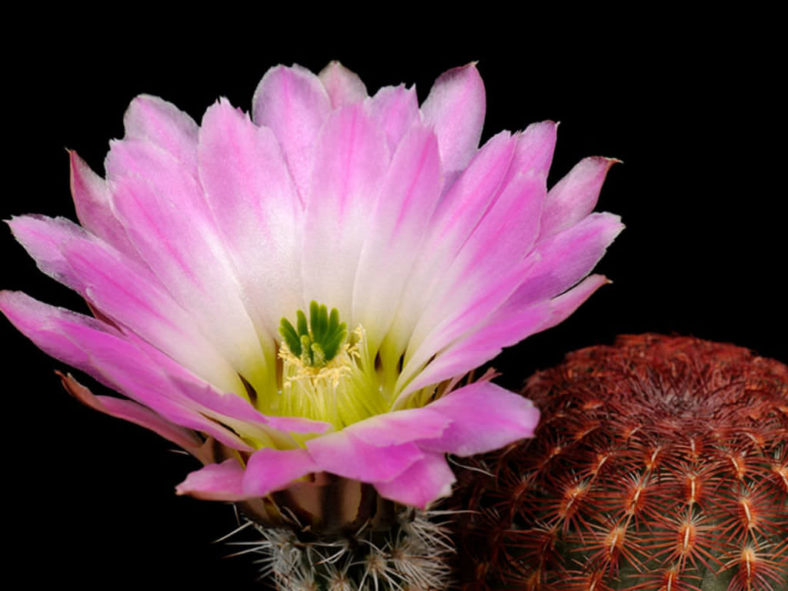Scientific Name
Echinocereus pectinatus (Scheidw.) Engelm.
Common Name(s)
Lace Cactus, Rainbow Cactus, Arizona Rainbow Cactus, Comb Hedgehog, Purple Candle Cactus, Spiny Hedgehog Cactus, Texas Rainbow Cactus
Synonym(s)
Cereus pectinatus, Echinocactus pectinatus, Echinocereus pectinatus subsp. pectinatus, Echinopsis pectinata
Scientific Classification
Family: Cactaceae
Subfamily: Cactoideae
Tribe: Pachycereeae
Genus: Echinocereus
Origin
Echinocereus pectinatus is native to northern Mexico and the southwestern United States.
Description
Echinocereus pectinatus is a small columnar cactus with such a thick spination that you can barely see the green stems with 20 to 23 ribs. The stems grow up to 14 inches (35 cm) tall and 5 inches (13 cm) in diameter, usually solitary or sometimes producing few offsets. Spines are up to 0.4 inches (1 cm) long, initially tan, becoming white or pinkish. Each areole bears 16 to 30 radial spines and 0 to 6 central spines.
The dramatic diurnal flowers are usually intense pink (sometimes magenta, lavender, or yellow to whitish) with a greenish-white base. They are funnel-shaped, up to 3 inches (8 cm) long, nearly equal in diameter, and appear on the sides of the stems in spring and summer. The spiny fruits are greenish-purple, spherical to elliptical, up to 1.2 inches (3 cm) in diameter, and contain tiny black seeds.

Hardiness
USDA hardiness zones 9a to 11b: from 20 °F (−6.7 °C) to 50 °F (+10 °C).
How to Grow and Care
If you can grow other globular cacti successfully, you can most likely grow Echinocereus well. One of the key factors in success with these is avoiding any hint of wet soil. Because of their weak root system, they are especially prone to root rot, which will eventually kill your plant. Otherwise, they thrive on a program of intense bright light, little water, and a steady diet of light fertilizer. These cacti are vulnerable to mealybugs and aphids.
Echinocereus are slow-growing cacti that should only need repotting every other year or so. You can prolong the time to repotting by removing plantlets and potting them up in their own pots. When repotting a cactus, remove it from its pot and remove any clumped soil. These plants tend to be shallow-rooted with weak root systems, so take care not to damage their roots.
Learn more at How to Grow and Care for Echinocereus.
Links
- Back to genus Echinocereus
- Succupedia: Browse succulents by Scientific Name, Common Name, Genus, Family, USDA Hardiness Zone, Origin, or cacti by Genus
Photo Gallery


